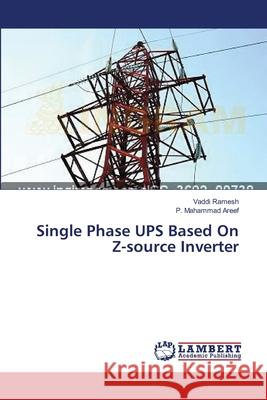Single Phase UPS Based On Z-source Inverter » książka
Single Phase UPS Based On Z-source Inverter
ISBN-13: 9783659543203 / Angielski / Miękka / 2014 / 56 str.
In This book use for Uninterruptible power supplies (UPSs) are widely used to supply critical loads, such as airline computers and life-support systems in hospitals, providing protection against power failure or anomalies of power-line voltage.In general, there are two types of traditional single phase UPSs. The first one couples a battery bank to a half or full-bridge inverter with a low-frequency transformer. In this type of UPSs, the ac output voltage is higher than that of the battery bank; thus, a step-up transformer is required to boost voltage. Due to the presence of the step-up transformer, the inverter current is much higher than the load current, causing high current stress on the switches of the inverter. The transformer also increases the weight, volume, and cost of the systemIn this type of UPSs, the additional booster is needed, leading to high cost and low efficiency. The controlling of the switches in the booster also complicates the system. The dead time in the pulse width-modulation (PWM). The proposed method is also implemented on hardware by using power electronic devices such as MOSFET and PIC controller for production of control signals.
In This book use for Uninterruptible power supplies (UPSs) are widely used to supply critical loads, such as airline computers and life-support systems in hospitals, providing protection against power failure or anomalies of power-line voltage.In general, there are two types of traditional single phase UPSs. The first one couples a battery bank to a half or full-bridge inverter with a low-frequency transformer. In this type of UPSs, the ac output voltage is higher than that of the battery bank; thus, a step-up transformer is required to boost voltage. Due to the presence of the step-up transformer, the inverter current is much higher than the load current, causing high current stress on the switches of the inverter. The transformer also increases the weight, volume, and cost of the systemIn this type of UPSs, the additional booster is needed, leading to high cost and low efficiency. The controlling of the switches in the booster also complicates the system. The dead time in the pulse width-modulation (PWM). The proposed method is also implemented on hardware by using power electronic devices such as MOSFET and PIC controller for production of control signals.











